What Should Oil Pressure Be At Idle? [The Correct Measure]
In the quiet moments when your car rests at a red light or hums gently in a parking lot, having a proper idle oil pressure is crucial. It’s a matter that represents the heartbeat of your engine, the life force that keeps it running smoothly.
So, what should oil pressure be at idle? At idle, an engine’s oil pressure should be around 20 to 30 PSI. But this can vary depending on the type of engine, vehicle, and oil quality. You may see 25 to 35 PSI on heavy-duty engines. A consistent oil pressure level at idle within the safe limit is critical to ensure the good shape of the engine and its lifespan.
That said, numerous factors are involved when it comes to the oil pressure of an engine. In this write-up, I’m going to explore them in vivid detail.
What Should Oil Pressure Be At Idle?
To begin with the topic, you should know that the ideal oil pressure of an engine is critical for its health, longevity, and performance. Oil is the lifeblood of moving parts as it lubricates them and dissipates heat.
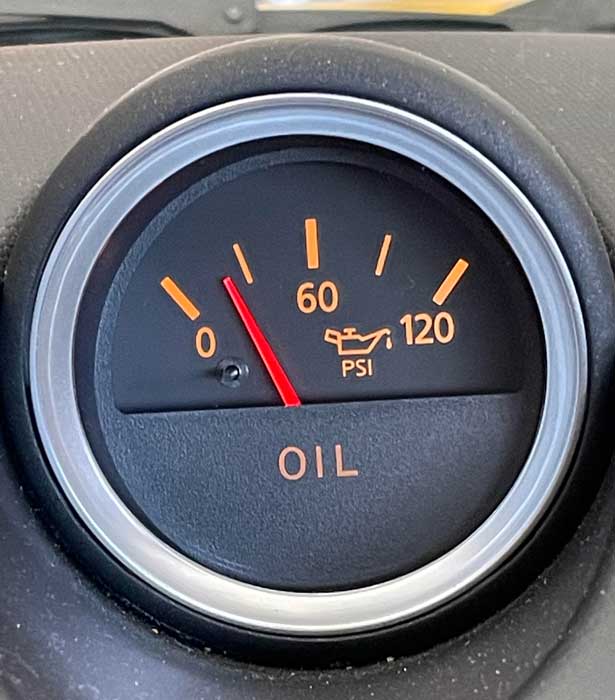
That said, the pressure of oil is different while accelerating and at idle. Under regular circumstances, oil pressure should be between 25 to 30 PSI. In the SI unit, it is 140 to 200 kPa (Kilo Pascal). That is, one square inch of area should feel 20 or 30 pounds of weight.
The oil pressure value, however, may vary depending on the car model and the oil type. For example, the MegaMax V8 may consistently exceed 30 PSI at idle. However, oil changes can keep it within the standard oil pressure threshold.
Factors Correlated To Idle Oil Pressure
Many stepping stones are responsible for determining the idle oil pressure in an engine. They can drastically change the state of the pressure. Let’s have a quick look at them:
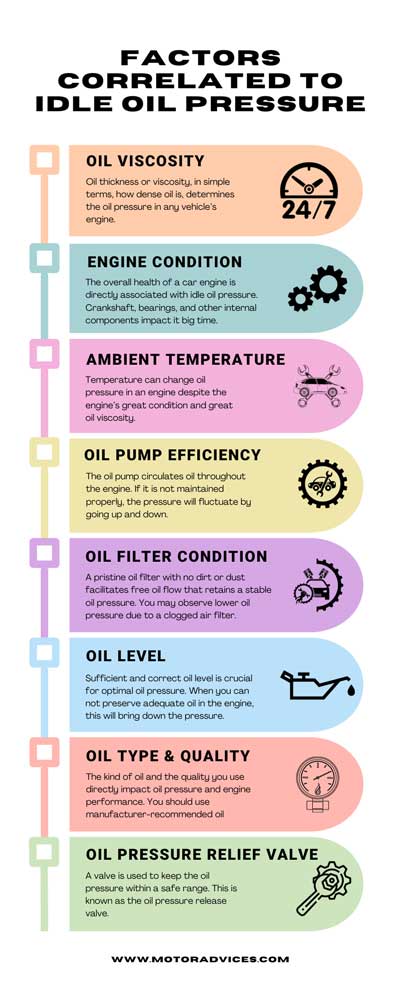
Oil Viscosity
Oil thickness or viscosity, in simple terms, how dense oil is, determines the oil pressure in any vehicle’s engine. It works for whatever it is, be it a car, truck, or other heavy-duty automobile. The general rule of thumb is that thicker and thinner oil pose higher and lower oil pressure, respectively.
Engine Condition
The overall health of a car engine is directly associated with idle oil pressure. Crankshaft, bearings, and other internal components impact it big time. After prolonged usage, wear and damage in these parts lower the pressure level at idle.

Ambient Temperature
Temperature can change oil pressure in an engine despite the engine’s great condition and great oil viscosity. As it turns out, cold weather increases oil viscosity, which raises the pressure. Warmer ambient, on the other hand, does vice versa.
Oil Pump Efficiency
The oil pump circulates oil throughout the engine. If it is not maintained properly, the pressure will fluctuate by going up and down.
Oil Filter Condition
A pristine oil filter with no dirt or dust facilitates free oil flow that retains a stable oil pressure. You may observe lower oil pressure due to a clogged air filter.
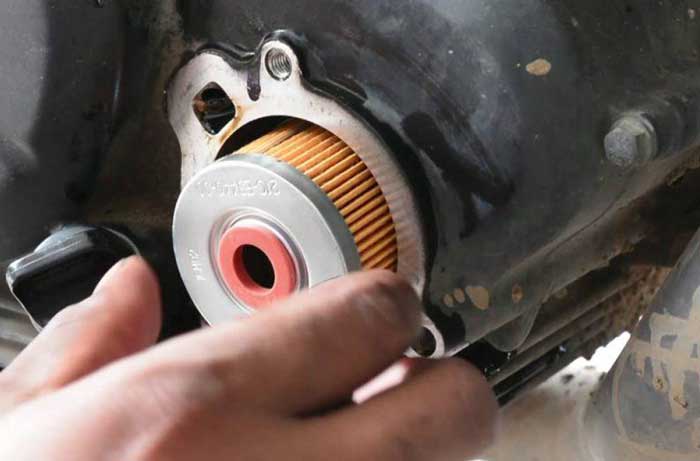
Oil Level
Sufficient and correct oil level is crucial for optimal oil pressure. When you cannot preserve adequate oil in the engine, this will bring down the pressure.
Oil Type & Quality
The kind of oil and the quality you use directly impact oil pressure and engine performance. You should use manufacturer-recommended oil and make sure it meets quality standards. Also, use suggested oil additives that are compatible with your vehicle engine.
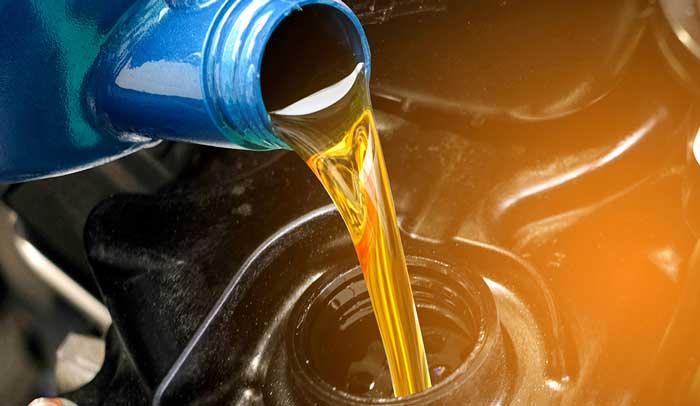
Oil Pressure Relief Valve
A valve is used to keep the oil pressure within a safe range. This is known as the oil pressure release valve. Oil pressure becomes inconsistent at idle if it develops a fault or malfunctions.
What Should You Do If Oil Pressure Drops At Idle?
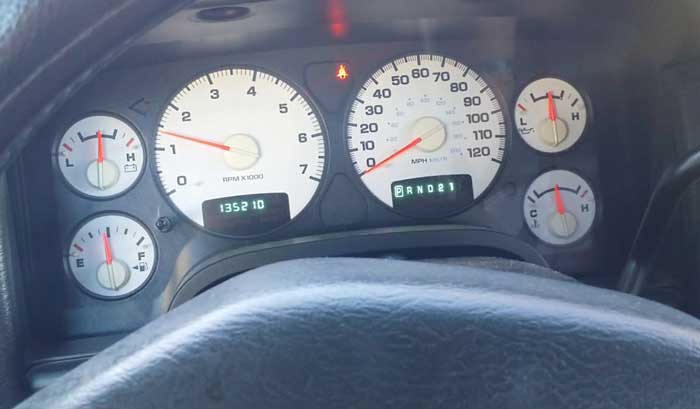
Now that you know how oil pressure can be regulated over different factors, let’s understand what steps you can take when the pressure falls.
- Check the oil level in your engine: Ensure there is enough oil. Check the dipstick. The oil level should be in between L(low) and H(high) marks. If needed, pour in more oil, which will fix low oil pressure at idle.
- Inspect the engine area carefully for oil leaks: Oil drip will cause low oil pressure. Patch up the leaks. Also, replace gaskets and seals if you have to.
- Evaluate and clean the oil filter: Remove soiled dirt clogging to make sure the oil is flowing properly. If it’s too bad, replace the filter. It should not cost more than $10.
- Examine if there’s any blockage that impedes oil flow: In the oil system of the engine, obstruction can lead to low oil pressure. Clear it out to remedy the pressure drop.
- Investigate the oil pump properly: Check whether it is malfunctioning or is worn out due to prolonged usage. If you don’t have enough technical knowledge, get professional help. They will fix low oil pressure at idle for you.
- Check the condition of the crankshaft bearings. Any wear on them will cause low idle oil pressure in the engine. Replace them to solve the issue.
How To Maintain Optimal Oil Pressure?
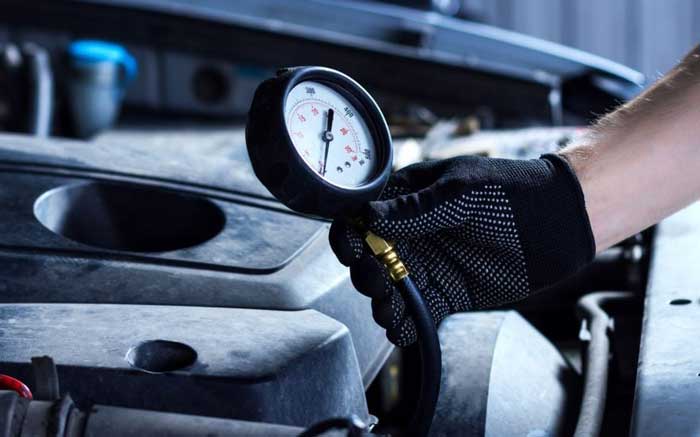
It’s crucial you try to maintain the correct engine oil pressure. For one, it’s to ensure the maximum performance of the engine and its longevity.
- Change engine oil regularly: Maintaining the manufacturer’s suggestion. This will ensure correct lubrication and oil pressure.
- Use oil that meets the viscosity specification: Check your vehicle’s manual to determine the correct oil thickness.
- Frequently check the oil level: Check it, especially before long trips. Make sure your automobile’s engine oil level is within the recommended range on the dipstick.
- Visually inspect the engine area for any sign of leakage: Do this, maintaining specific intervals.
- Keep a maintenance schedule: Do this to check the overall health of the engine. Check for any signs of wear and tear and address them accordingly.
- Routinely check the oil pressure gauge on your dashboard: When you notice significant deviations from the expected range, perform a thorough oil system.
Frequently Asked Questions
After digging into the matter of oil pressure, these are the queries you should take a look at. This will clear the doubts and give you more confidence regarding oil pressure.
In terms of idle oil pressure, 40 PSI is on the high side and will slowly damage the engine. But when accelerating, this is completely fine, depending on the car model and brand. Oil pressure should be between 25-65 PSI while running.
Yes, thicker oil raises oil pressure, but by a small margin. This happens because the regulator valve still opens up when oil has a higher viscosity. Unlike thin oil, thick oil does not escape from the bearing clearance.
The quality and characteristics of the synthetic oil determine whether it should increase the oil pressure. Typically, synthetic oil drops oil pressure, but it maintains adequate oil flow thanks to its molecular structure.
Closing Thoughts
The key to keeping your engine healthy is maintaining the right oil pressure. Monitoring consistently, regular oil changes, and addressing any fluctuation in the quickest time possible contribute to the engine’s optimal performance.
Remember, the specific requirement varies based on the vehicle model and manufacturer. If you still have doubts in your mind, talk to a professional in your area.


